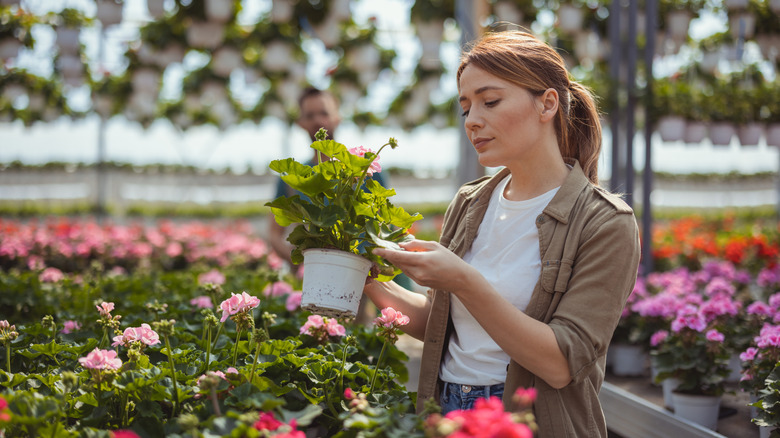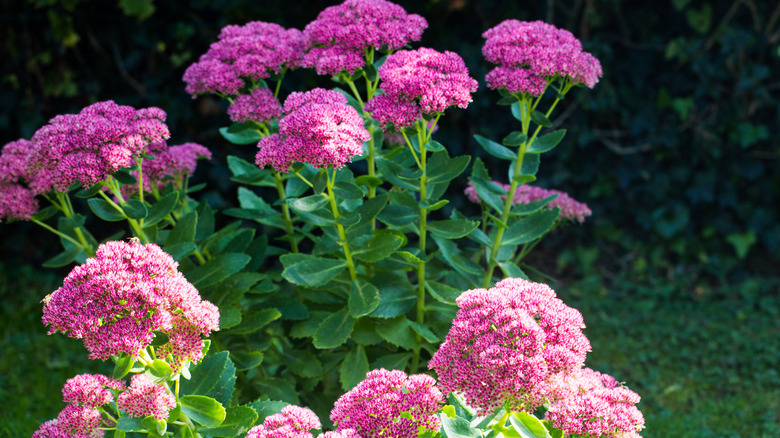The Sun-Loving Pink Summer Flower That Doesn't Need Much Water To Thrive
The bright, late summer blooms of the 'Autumn Joy' cultivar of sedum (Hylotelephium spectabile 'Autumn Joy') grow in clusters of tiny, star-shaped flowers that change color from pink to red to rust as the warm season progresses. These low maintenance plants need very little water, thriving in dry conditions, and grow in 1- to 2-foot tall round clumps. Hardy in USDA zones 5 through 9, sedums, also known as stonecrop, can be grown in full sun and prefer well-drained, alkaline soil. 'Autumn Joy's' dense, succulent foliage and bright flowers attract bees and butterflies while being resistant to rabbits and deer, but note that these visitors may still eat the leaves when no other plants are available. If you leave the stalks intact over the winter, the plant's seed heads provide food for birds.
'Autumn Joy,' like most sedums, doesn't withstand heavy foot traffic. Plant it in drought-tolerant rock gardens, on banks or hillsides, interspersed with other plants, or as a low-maintenance ground cover in protected areas. If you don't have an ideal landscape, they can also be planted in containers. Since they bloom late, they'll provide color after other flowers have faded. There's no need to replant these perennials in spring. Even after a hard winter, 'Autumn Joy' will regrow when the weather warms, reviving to add a flourish of water-smart color to your garden.
Planting and care of 'Autumn Joy'
Plant 'Autumn Joy' in the spring after the danger of frost has passed. Seedlings started at a nursery should be set in a hole that's as deep as the container it came in and twice as wide. Backfill the hole and give the seedling a good drenching, but after the initial watering, the plants probably won't need more unless your summers are very hot and dry. Choose a spot that gets at least six hours of full sun a day. Sedum is one of the 24 perennial plants to divide in spring, and it's one of the easiest plants to divide. To do so, dig up the plant, shake excess dirt off the roots, and gently pull the plant apart, leaving three to five shoots in each new clump.
'Autumn Joy,' an upright variety of sedum, needs little maintenance once it's established. If the stems droop before the plant starts to flower, it may be getting too much water. Stake the stems or prune them back and cut back on watering. Too much shade or water, or soil that's too rich once the flowers bloom, may cause leggy stems that can't support the heads. If the spot is too shady or the soil is too rich, dig the plants up and replant in a more suitable location with gravelly or sandy soil. Sedum are generally pest resistant, but black aphids may be a problem. Knock the bugs off with a steady stream of water. Be patient if the plant looks dead in the spring — tiny leaves will appear in time.

